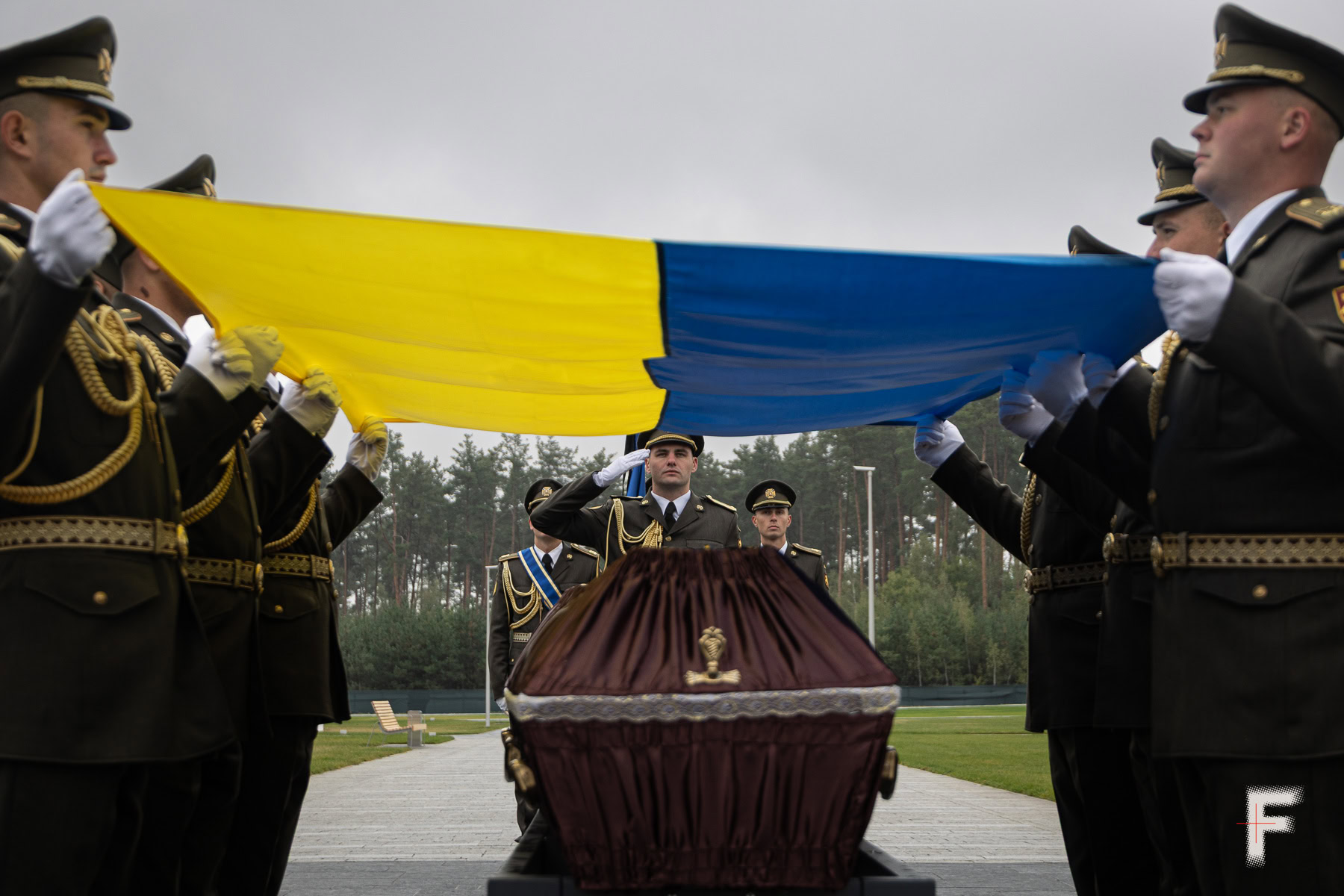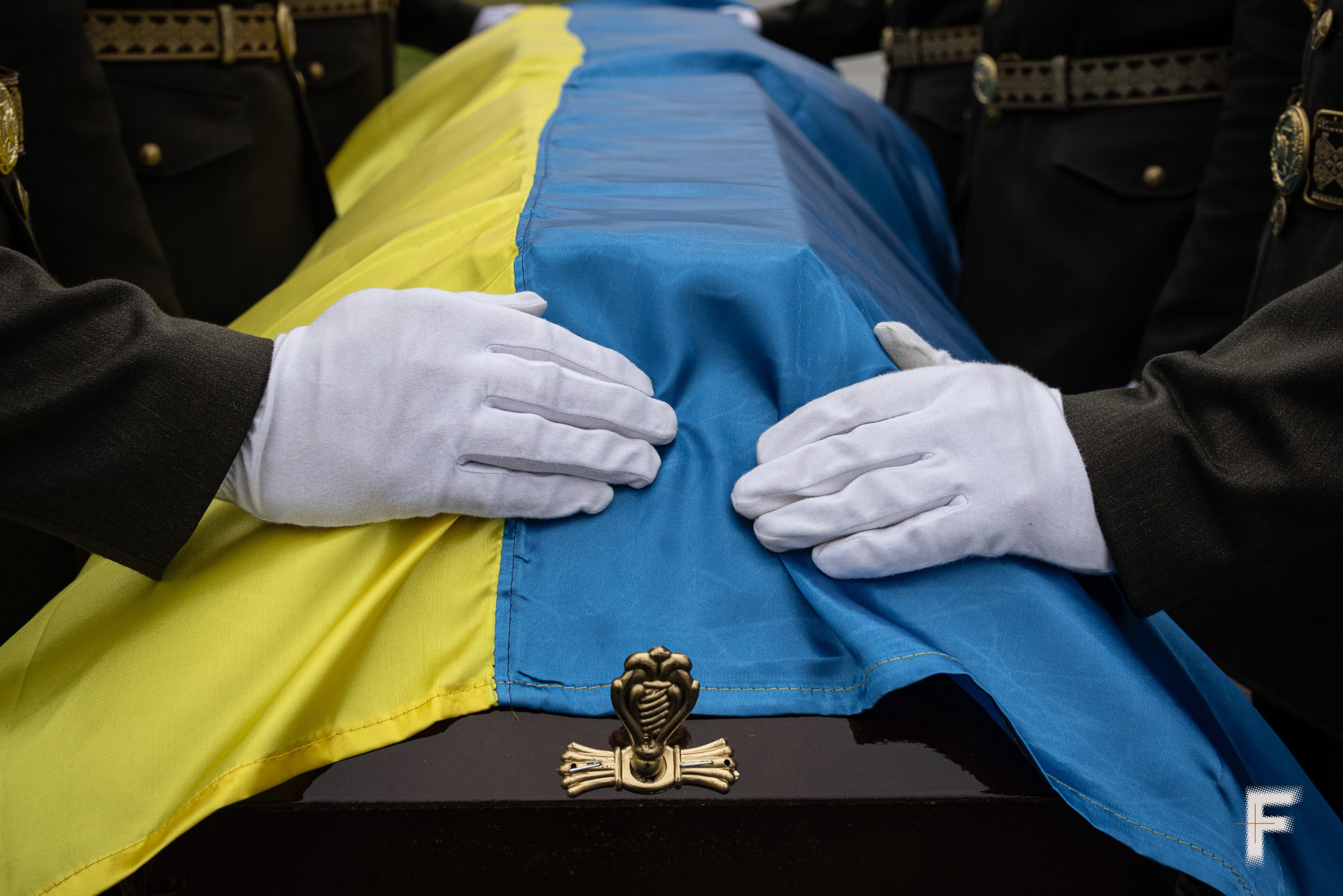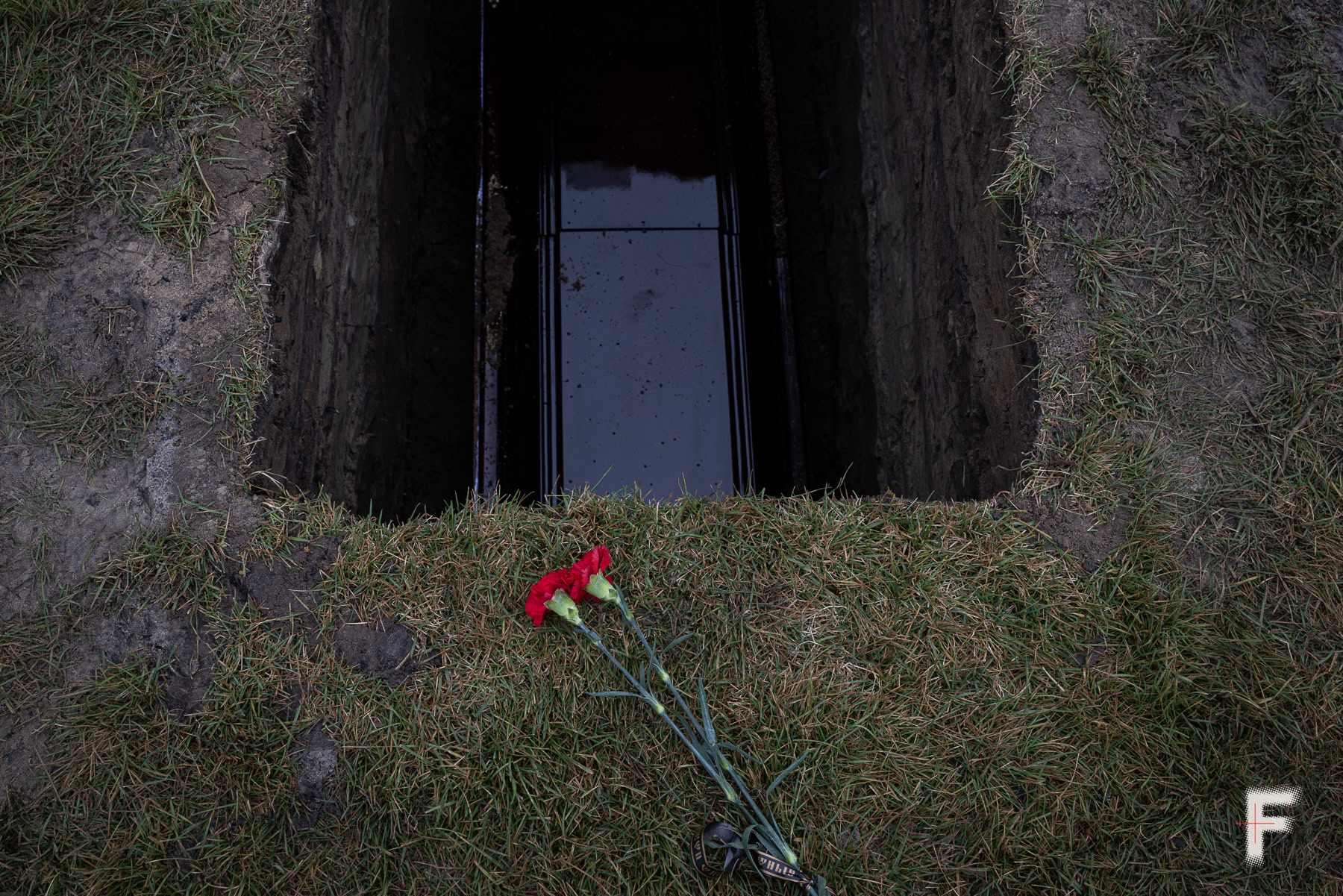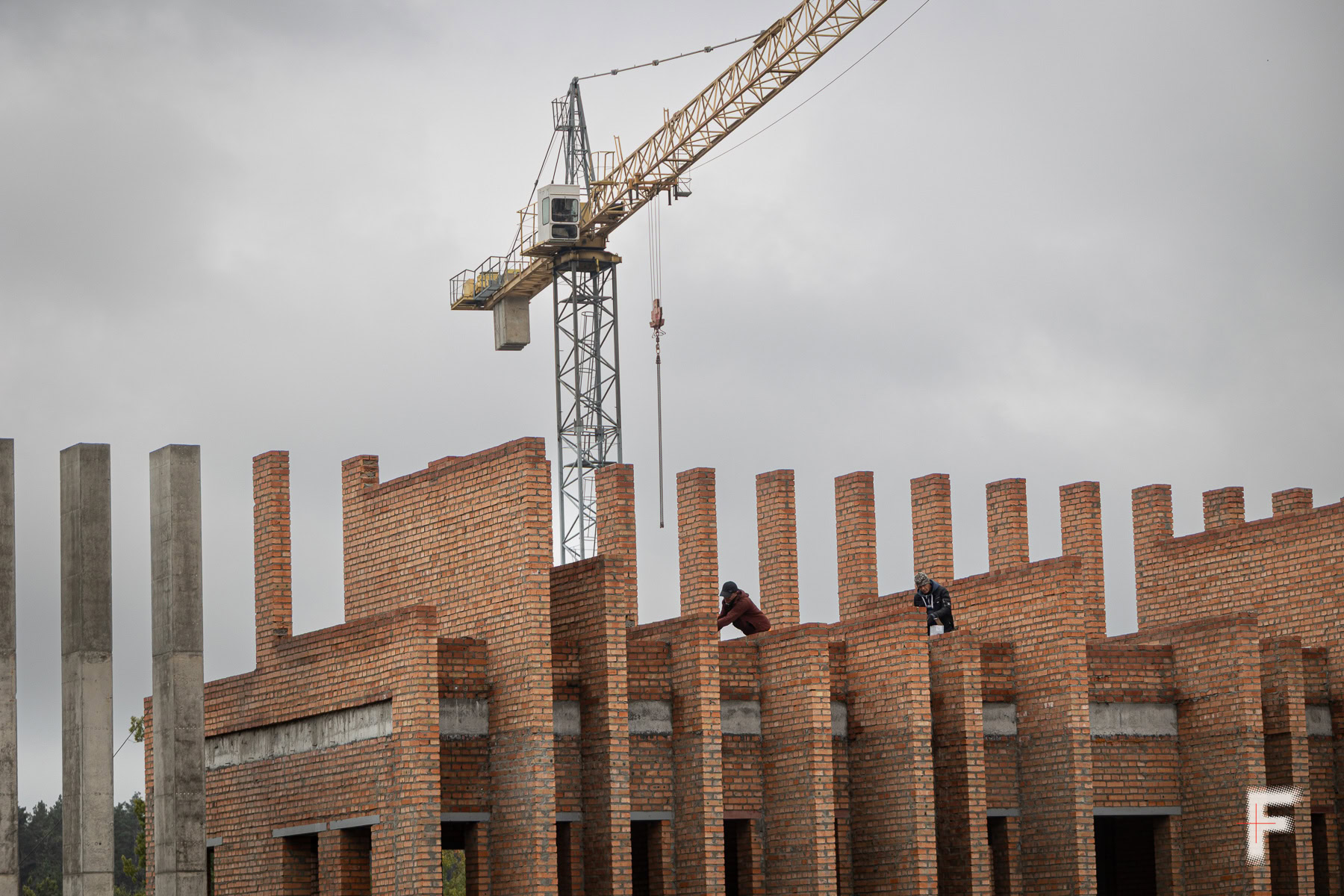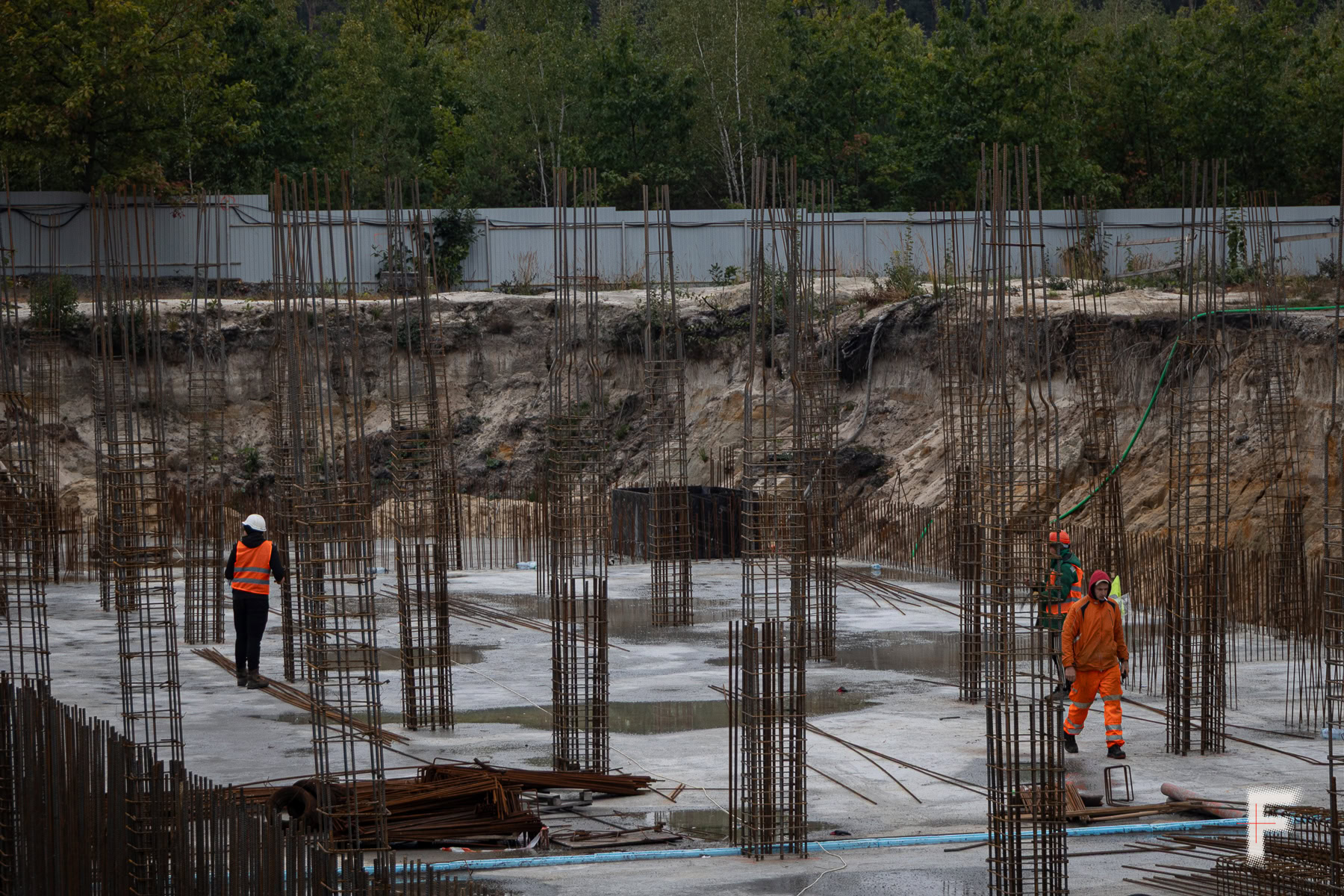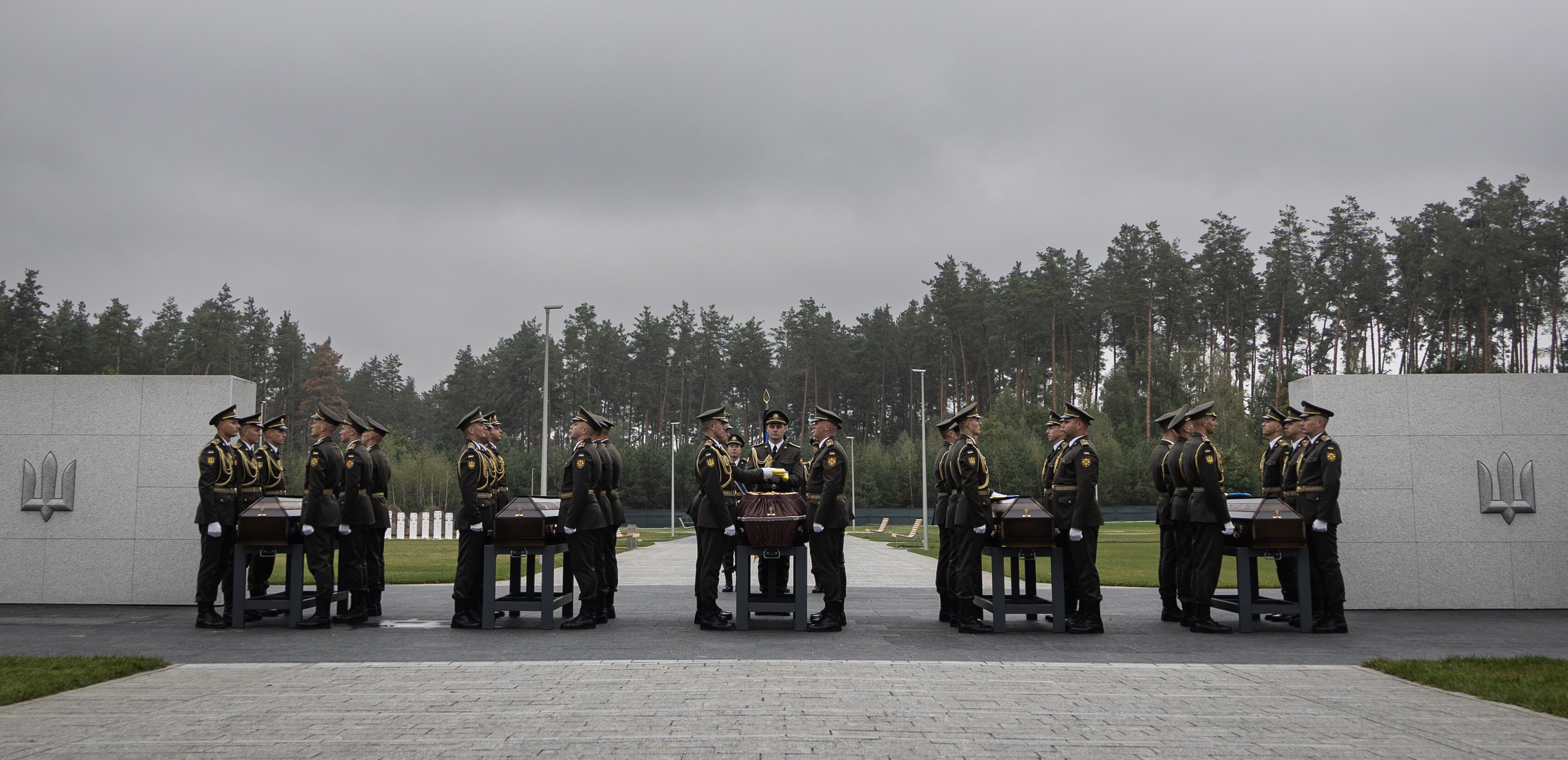

Dignified burial of fallen soldiers: challenges for families, shortage of gravesites, and public dissent
At the National Military Memorial Cemetery, which opened on August 29, 2025, more than one hundred soldiers have already been laid to rest. Frontliner reporters observed the ongoing construction of this site and learned about the challenges Ukrainians face in burying their fallen defenders.
Families of fallen soldiers face difficult questions: where and how to bury a loved one who died defending their country. In Kyiv, several cemeteries have designated sections for defenders. Yet the city faces a growing problem – there are not enough available burial spaces.
Recently, families have been given a new option — to bury their loved ones at the National Military Memorial Cemetery (NMMC) near Kyiv, which opened in August.
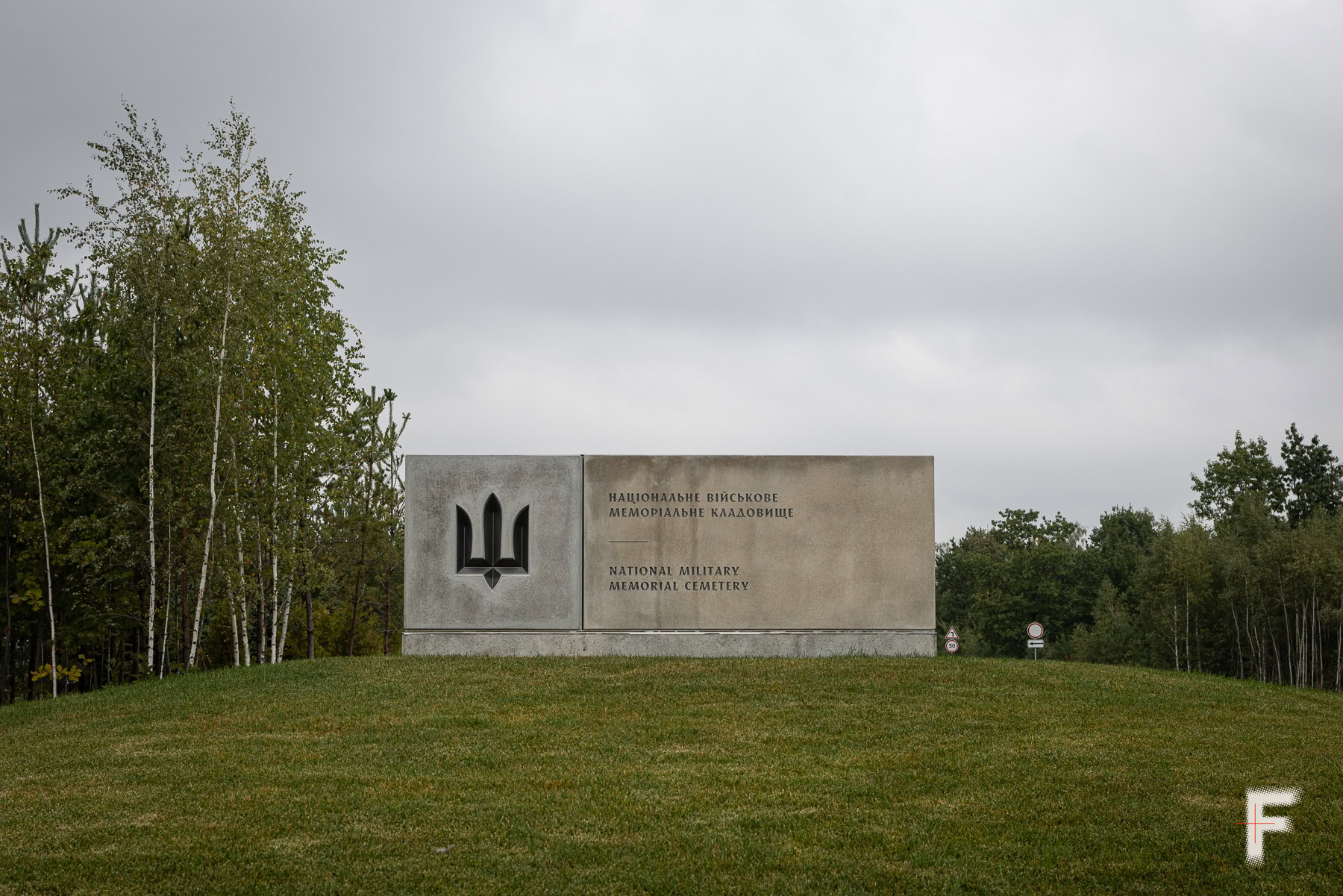

Perpetual care
At the National Military Memorial Cemetery near Vita-Poshtova in the Hatne community of the Kyiv region, five Ukrainian soldiers whose identities remain unknown were laid to rest. Around 2-3% of DNA identifications of fallen defenders end without a confirmed match.
In such cases, a coffin may hold only fragments of a body or the soldier’s personal belongings. Each is marked with an identification number tied to DNA records so that the grave can always be found. The same number appears on the temporary grave marker and the Ukrainian flag draped over the coffin.
Although the names of these five soldiers are unknown, the ceremony, like every burial at the Memorial, follows an honorary military ritual and includes the participation of a chaplain. Only combatants whose families have applied for burial are interred at the NMMC.
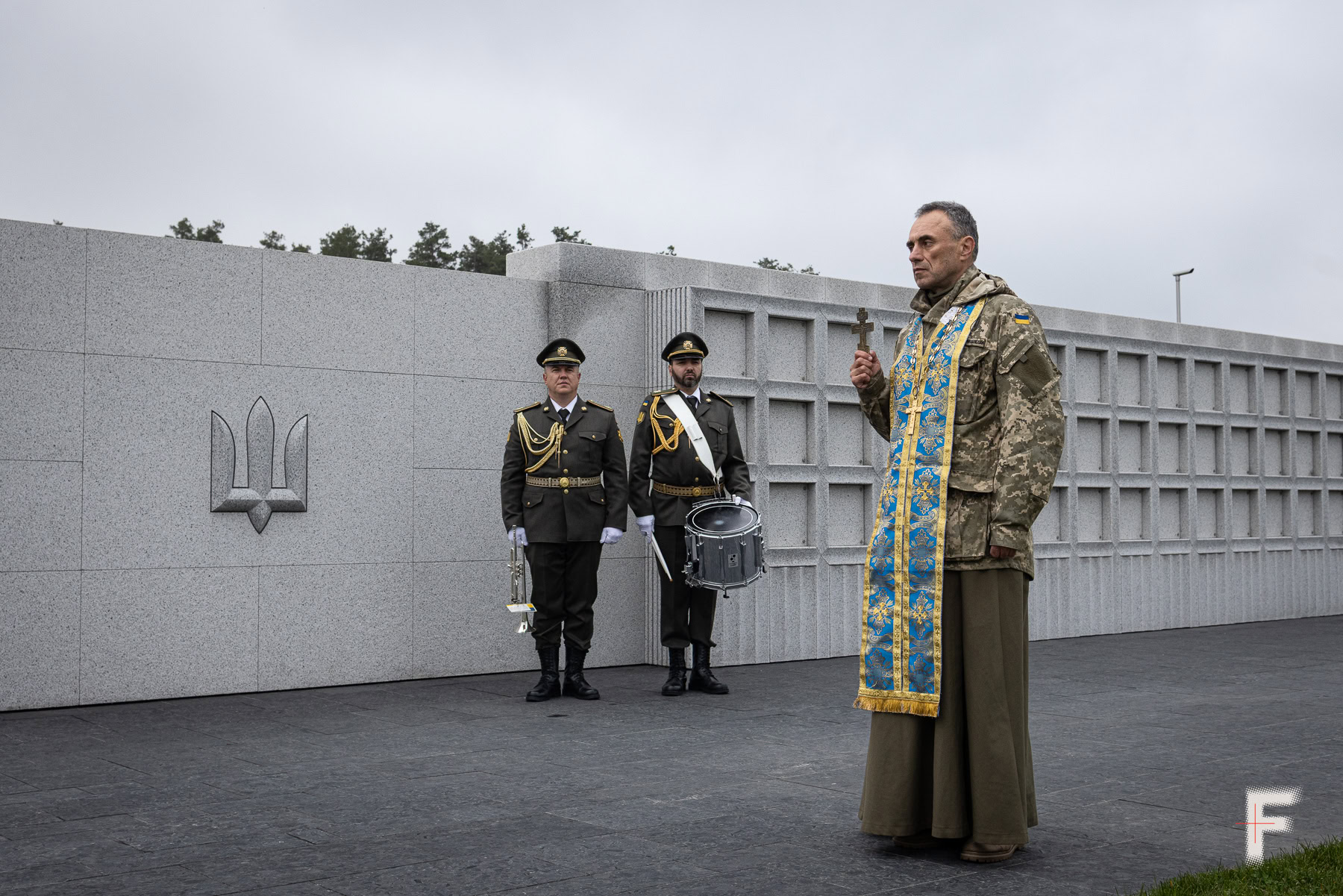

“Families understand that this is about the perpetual care of a defender’s grave. Even if relatives move abroad or there’s no one left to visit, the grave will not be forgotten. Each defender will be buried with dignity – and that dignity will be protected,” says Lesia Kachor, a representative of NMMC.
The number of applications for burial at NMMC has not been disclosed. However, the Ministry of Veterans Affairs states that “the process is ongoing, and the number of applications continues to grow. Families expect ceremonial burials to follow established procedures.”
The burial of unidentified soldiers took place during the cemetery’s first construction phase, completed at the end of May. The Memorial officially opened on August 29, 2025, and is planned to be built in seven phases overall.
The first phase is designed for approximately 6,000 graves, while the entire Memorial Cemetery will accommodate about 100,000 overall. This also accounts for veterans who pass away due to age or other circumstances, Kachor notes.
Over 100 burials of Ukrainian soldiers have already taken place at the cemetery. Among them are eleven defenders whose names are known and whose families personally applied to the Memorial. In the columbarium wall of the National Military Memorial Cemetery, the Hero of Ukraine, Chief Sergeant Viktor Klymchuk, callsign “Horets,” was interred.
[Translator’s note: “Horets” means “Highlander” in English.]
Construction of the second compound is ongoing, which will include an administrative building and a shop. NMMC also plans to build a museum complex, a crematorium, and a Memorial Wall displaying the names of fallen defenders.
Residents of Markhalivka oppose the military cemetery
Local resident Yurii Sydorenko from Markhalivka attended the burial. While Cemetery staff were covering the coffins with soil, he took photos of the graves. He says he periodically visits the Cemetery to observe what is happening, what burials are taking place, and who is being buried.
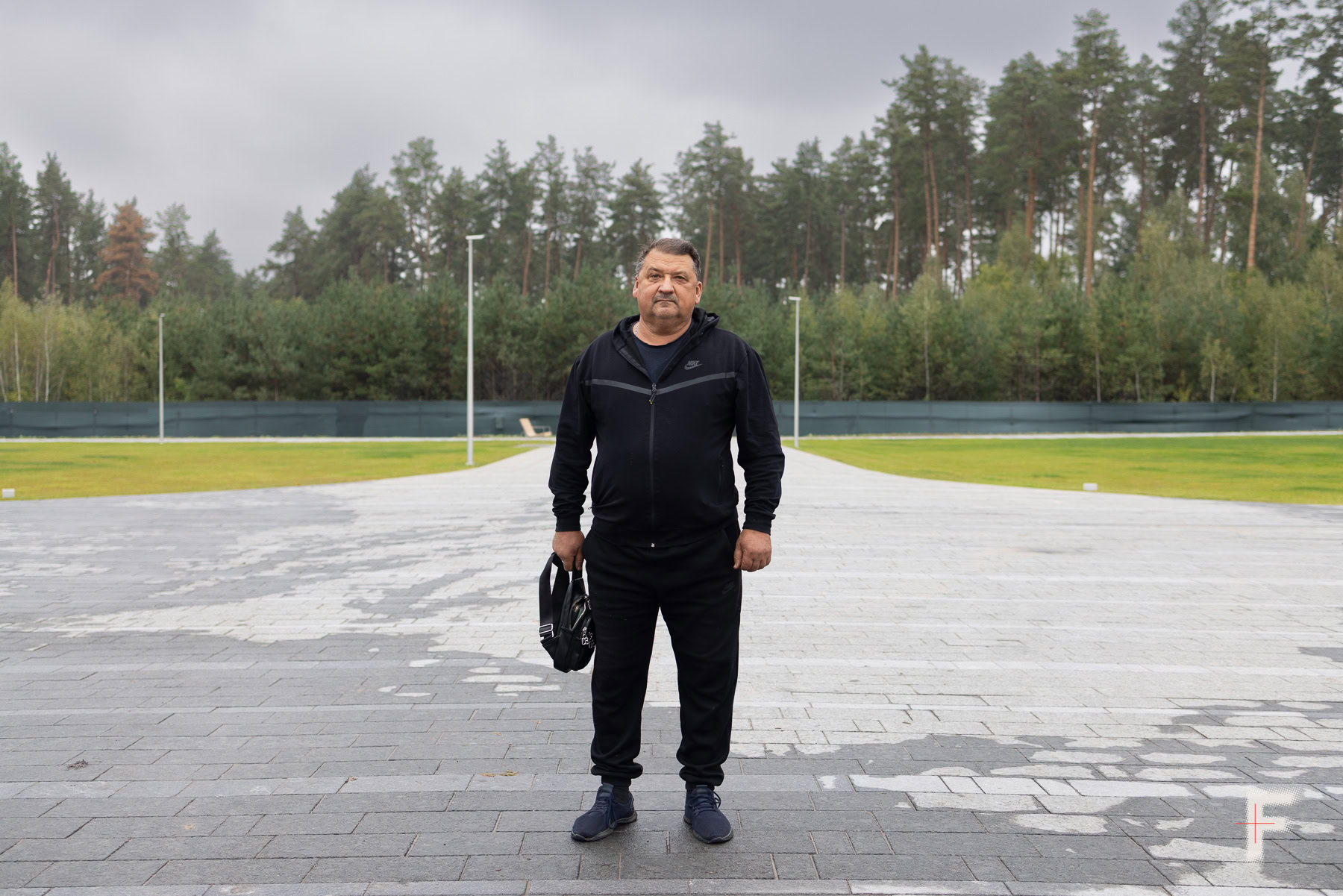

“We’ve chronicled all that was happening here – how construction started, how the forest was destroyed, how water bodies were affected, how it all was done. We just document it and hope that over time, everything will be properly assessed: whether it was necessary to build this cemetery here,” says Yurii.
He is part of a movement opposing the military memorial. In March 2024, residents of Markhalivka formed a public organization called “Markhalivka.Support” as soon as they learned about the planned construction.
On the reasons for opposing the cemetery, Yurii Sydorenko says:
“First, this area is part of the Emerald Network and is protected under the Bern Convention. Second, no environmental impact assessment was carried out, so we don’t know how the construction will affect the ecology or local residents. I’ve lived here for 40 years and know this area well – it’s marshy, and during heavy rains or snowy winters, it floods. How they are building here raises serious questions. Sanitary, construction, and environmental standards are being violated. We are closely monitoring everything and hope that, sooner or later, a proper evaluation will be conducted,” he says.
[Translator’s Note: The Emerald Network is a Europe-wide system of protected natural areas designed to preserve biodiversity under the Bern Convention. Ukraine joined in 1996.]
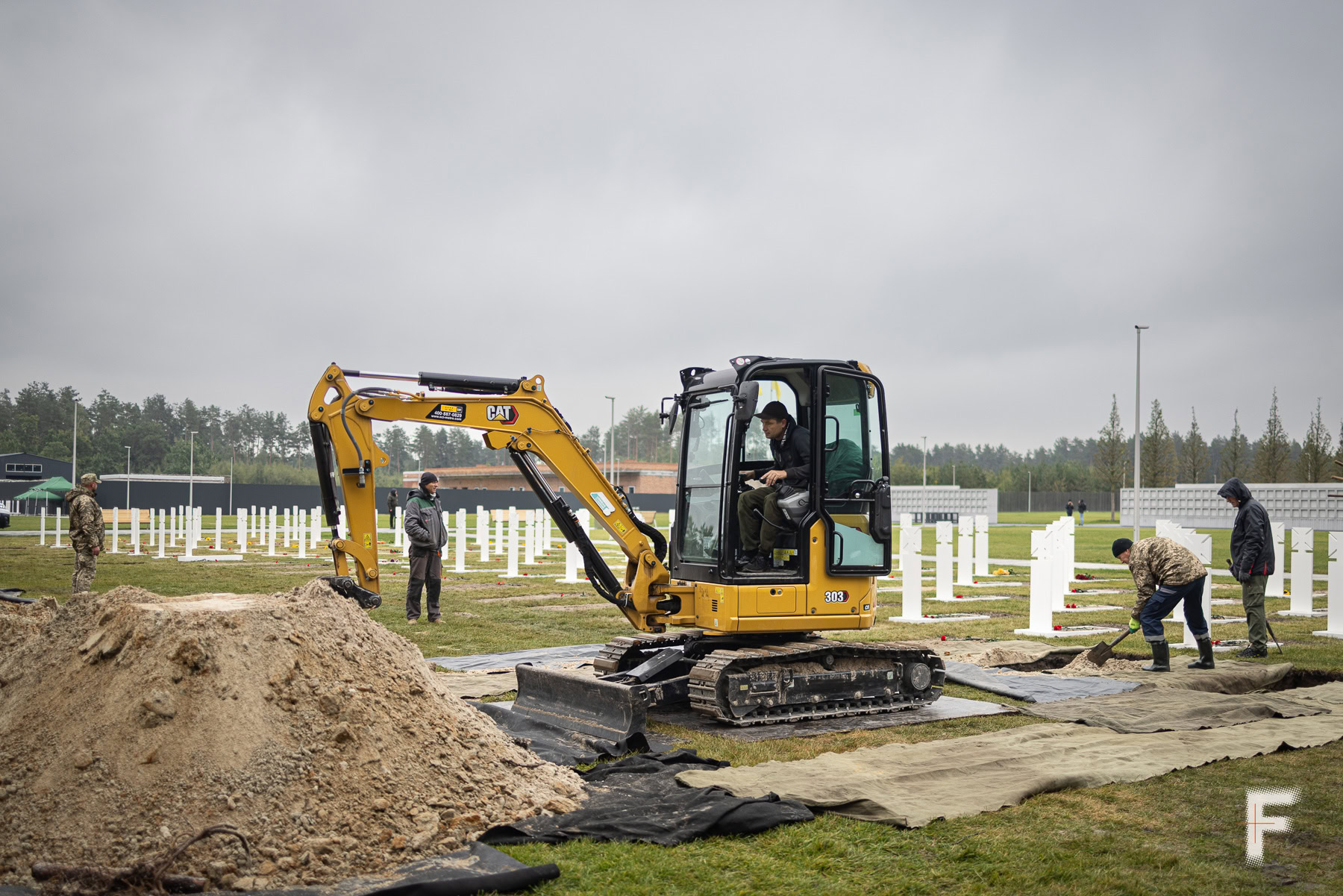

Some soldiers also opposed the construction. For instance, veteran Serhii Yaniuk went on a hunger strike at the National Memorial for Fallen Soldiers in Independence Square, Kyiv, to protest the project.
The creation of the state organization “National Military Memorial Cemetery” by the Ministry of Veterans Affairs was approved by the Cabinet of Ministers in October 2022, and the project’s implementation was approved in August 2023. Following this, Deputy Minister of Veterans Affairs Oleksandr Porkhen stated that the state examination of the project documentation for the first phase received a positive assessment. According to him, the State Agency Ukrderzhbudexpertyza found no violations regarding public health and epidemiological safety.
[Translator’s note: Ukrderzhbudexpertyza is the state agency that provides official assessments of building and infrastructure plans.]
“Regarding the concerns raised by Mr. Yurii, we responded, and held conferences to dispel myths. We communicate regularly with local residents, and some support the creation of NMMC, understanding its importance as a memorial where families can come. But some residents oppose having a proper burial site for soldiers here, they want it anywhere but here,” says Lesia Kachor.
According to her, the area was not densely forested, and she offers satellite images as evidence of the landscape prior to construction.
Cemeteries of Kyiv
Oleksandr Skoryk, a veteran and deputy director of the State Municipal Enterprise Spetskombinat, which provides funeral services, said that most cemeteries in Kyiv no longer have space for new burials.
[Translator’s note: Municipal Enterprise Spetskombinat is a local government–owned company handling specialized municipal operations.]
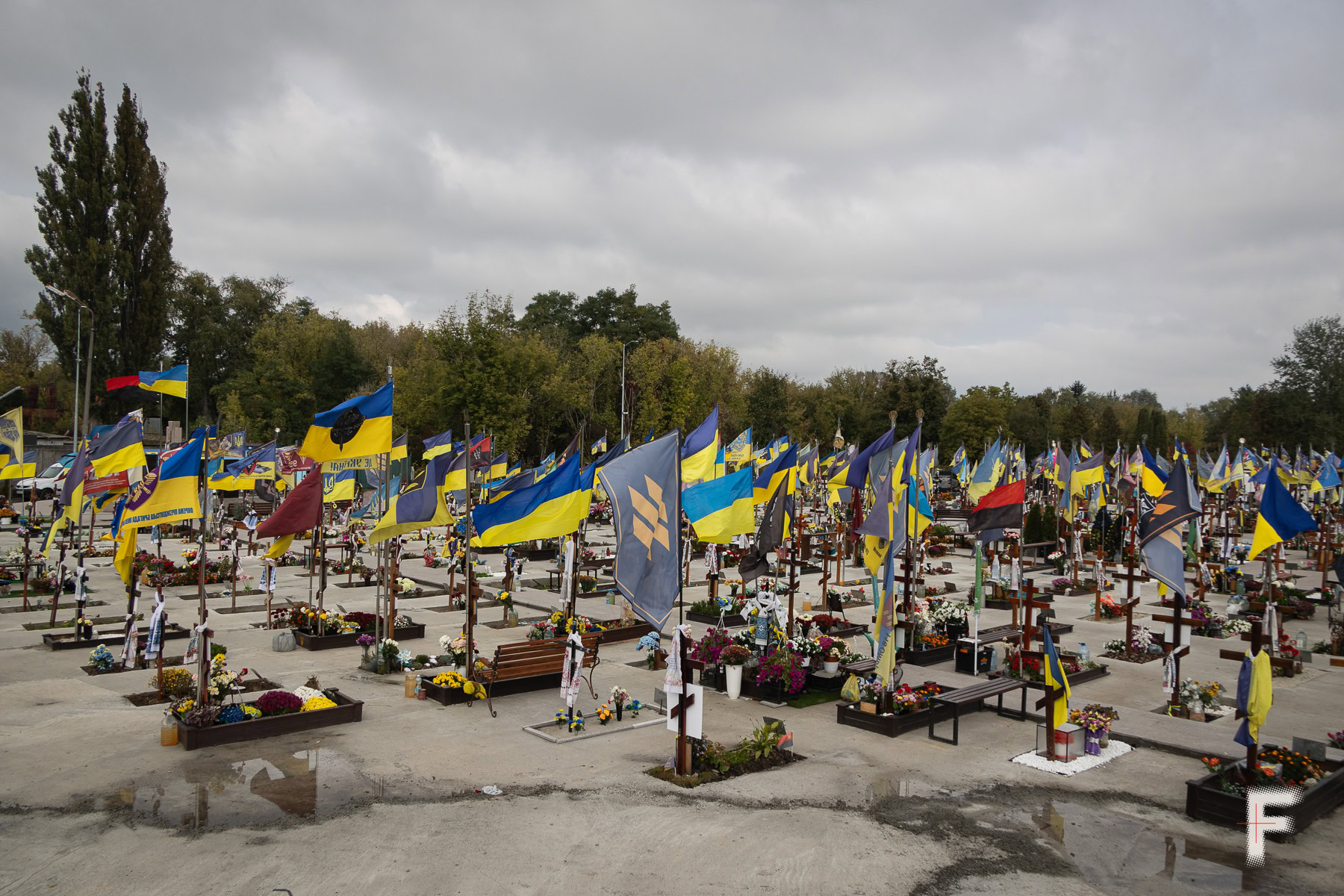

“Most of Kyiv’s 27 cemeteries are closed; burials no longer occur there. Some are semi-closed, where a coffin or urn can be added to a relative’s grave. Of the open cemeteries, Lisove is the largest, with an 800-meter alley for defenders. Coffins are placed eight in a row. Eventually, space there will run out too,” Skoryk said.
At Berkovets Cemetery, in the section designated for military burials, Frontliner reporters spoke with families of fallen soldiers buried there. According to them, the burials were conducted fairly quickly and organized by the Territorial Personnel Center their relatives were assigned to.
[Translator’s note: Territorial Personnel Centers are local military recruitment and administrative offices in Ukraine.]
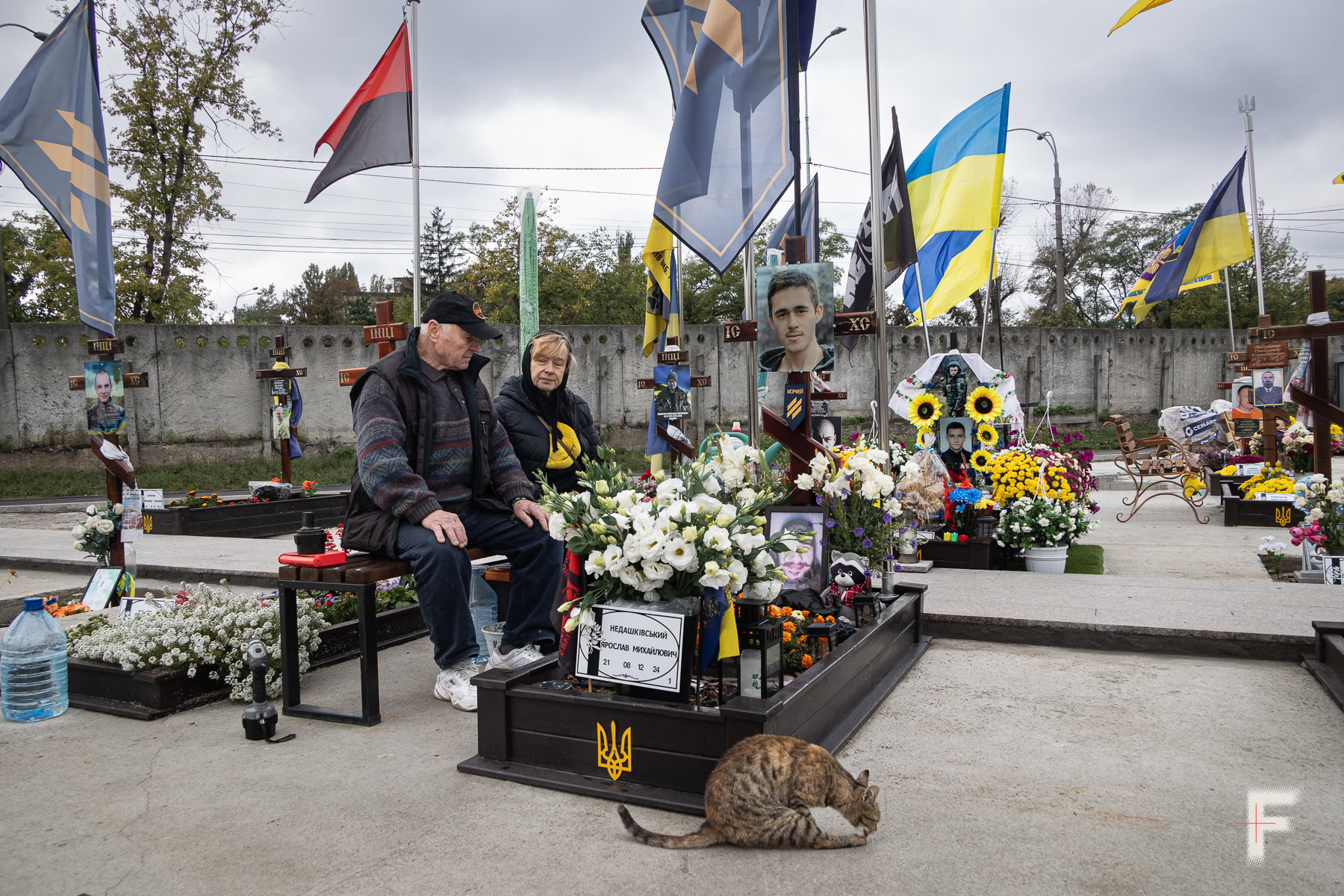

Іван і Тетяна Середницькі, кожного дня приходять на Берковецьке кладовище до свого внука Ярослава Недашковського. 21 річний військовий, оператор БПЛА в 3-й окремій штурмовій бригаді, загинув у грудні 2024 року.
Родина Ярослава – з Києва, живуть у Святошинському районі, тому вибрали поховати Ярослава саме на Берковецькому кладовищі, щоб навідувати його щоденно. За словами Івана та Тетяни, саме з цієї причини їхня родина не замислювалася над тим, щоб перепоховати Ярослава на Національному військовому меморіальному кладовищі.
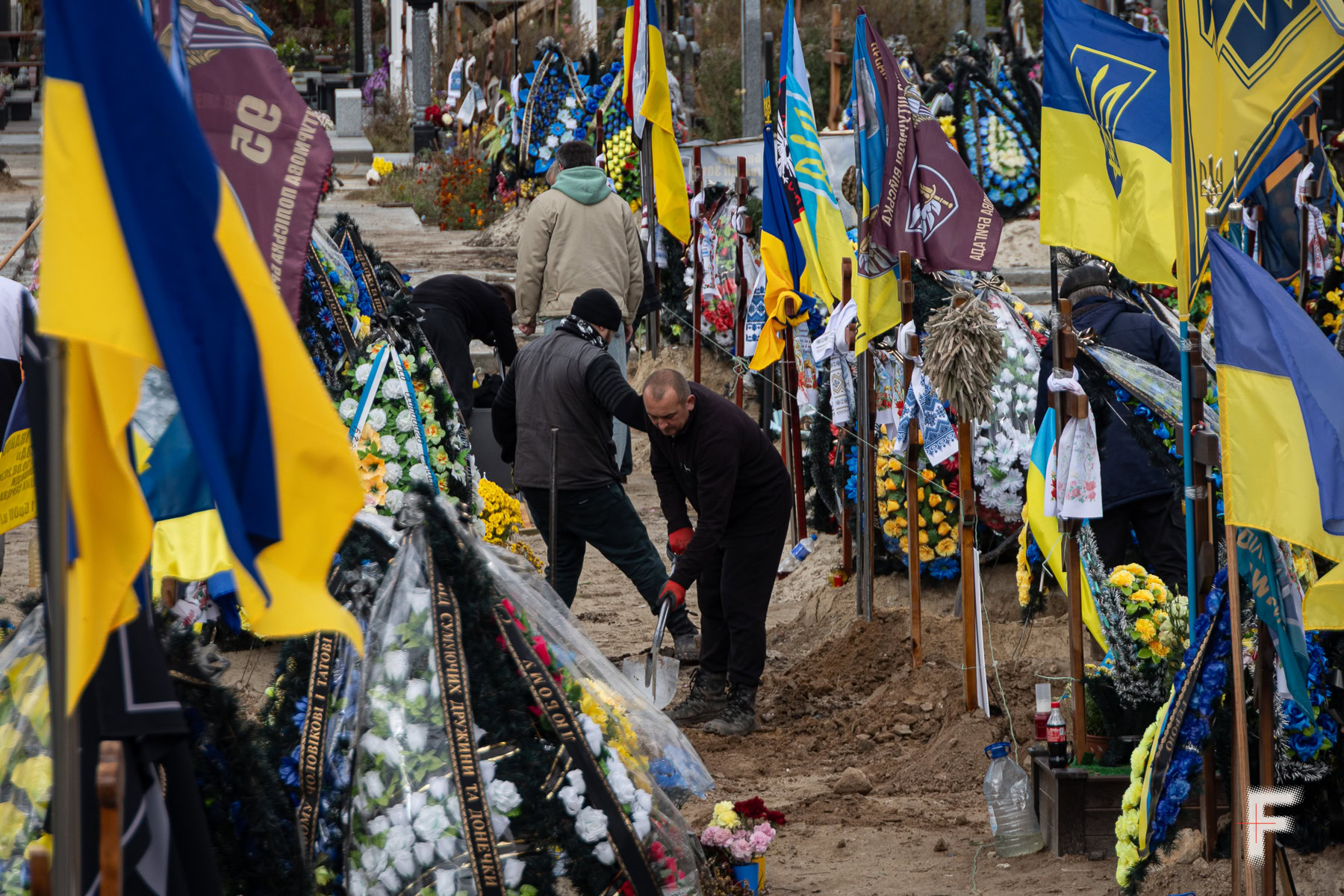

According to the Kyiv City State Administration, the city currently has 27 cemeteries covering over 500 hectares. However, most are full. The Administration says it is already working on creating new burial spaces.
Text: Kateryna Farbar
Photos: Danylo Dubchak
Adapted: Irena Zaburanna
Read more — Kyiv Wall of Memory and spontaneous memorialization. How to honor the memory of all the fallen?
